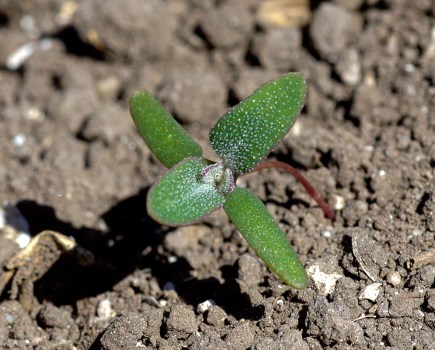Scientists have identified a gene which could protect against fungal threats and harnessing its potential may offer a new way to keep wheat diseases in check. CPM reports.
“Knocking the gene out in fusarium saw a complete inability of the pathogen to spread in the wheat spike.” – DR ERIKA KROLL
By Mike Saull
From a pool of more than 14,000 gene candidates, scientists have identified one which plays a role in driving forward pathogen development within wheat. Consequently, new products designed to block this gene’s action could revolutionise the way in which disease is controlled.
One of the key pathogens boosted by the newly identified gene is Septoria tritici, which even with current fungicide use, causes estimated annual yield losses in the UK of £110-£220M.
While further work is required and researchers stress it’s some way off being commercialised, creating a product which prevents this gene’s activity of encouraging disease development in wheat could help to bolster current fungicide options through offering a new mode of action.
The project, led by Rothamsted Research in partnership with the University of Bath and the University of Exeter, used combined pathogen host modelling to map cereal disease interaction for the first time.
This work focused on identifying the genes which are active during infection and traced them to the proteins that help disease to build-up in wheat tissue. One gene stood out – identified as synthesising a protein known as Knr4 that boosts the virulence of some fungal pathogens – a driver of infection for fusarium and septoria.
Knr4 was originally explored by other scientists in the model yeast fungus Saccharomyces cerevisiae where it’s known as ‘killer nine resistant’. This is because overexpression of Knr4 in this yeast species was found to be associated with resistance to the killer nine toxin produced by another yeast type.
According to the bioinformatics scientist leading the project, Dr Erika Kroll, the Knr4 gene is activated at the earliest stages of infection suggesting it’s a key gene required for the fungus to invade wheat. “Remove or disable the gene and the disease is less able to spread,” she says.
“We’d not looked at Knr4 and its effects in pathogens of agricultural significance before, but in this instance, it came up as highly important in
gene expression in host colonisation and is clearly critical in enabling the fungus to cause pathogenicity.
“Knr4 is involved in regulating growth rate and sensitivity to stress and appears to be necessary for full fusarium virulence,” she adds. “Knocking the gene out in fusarium saw a complete inability of the pathogen to spread in the wheat spike and a similar deletion also resulted in a drop in virulence of septoria. “Most importantly, this protein is only found in fungi, not in plants or animals meaning if we target Knr4, we may be able to reduce the infectivity of pathogenic fungi without harming the wheat crop, ourselves, or other animals. This could be a game-changer,” she suggests.
While further research is required, Erika adds it’s likely that controlling this gene’s activity could play a role in cutting the development of other key cereal crop diseases too.
“This completely new method of disease control would use a mode of action currently not utilised in agricultural fungicides and so would be a different approach to back the different modes of action and resistances of current products.
“Hopefully if we can develop a chemical to target the Knr4 gene we can control fusarium head blight, septoria and other diseases.”
Erika suggests this gene discovery approach is akin to exploring a city map where roads connect key locations like houses, workplaces and recreational areas. In a similar way, in a biological network, the connections represent interactions between genes.
“Just as some intersections in a city are critical for traffic flow, certain genes serve as ‘hubs’ in the fungal network. If one of these essential genes is disrupted, such as Knr4, the network collapses, halting the fungus’ ability to survive and spread,” she says.
With mounting challenges in fungal control and increasing restrictions on fungicide use due to environmental concerns, there’s a growing demand for innovative control strategies, believes Erika. She says this could be achieved through the development of chemical fungicides that disrupt the protein’s function or through the application of RNA interference techniques that would reduce fungal gene expression.
“Stricter regulation of fungicides is contributing to growing pathogen resistance as fewer chemicals can be used; there’s a pressing demand to identify new target sites for control. “This research not only advances our understanding of mechanisms required for full fungal virulence, but also offers a promising direction for the development of effective strategies for disease control.”
Rothamsted has now approached agrochemical manufacturers and while a marketable product could be years away, Erika believes the discovery offers hope.
Reflecting on the work, Agrovista’s Mark Hemmant agrees. “Anything that could help with cultural disease control is to be welcomed.
“Even our less susceptible varieties have struggled in the last two wet seasons. We’re having to mix fungicides to cope and while some newer products are better than we’ve had in the past, they’re disease specific and mixing actives means the costs of key T1 and T2s are considerably more than they used to be.”
According to Mark, disease- related problems are being exacerbated by earlier sowing. “We now have to combine several approaches to protect our best wheat genetics as provided by the breeder.
“Therefore, any new method of control that works and can be used alongside other ways of minimising disease risks will be much appreciated,” he concludes.
This article was taken from the latest issue of CPM.
For more articles like this, subscribe here.
Sign up for Crop Production Magazine’s FREE e-newsletter here.




